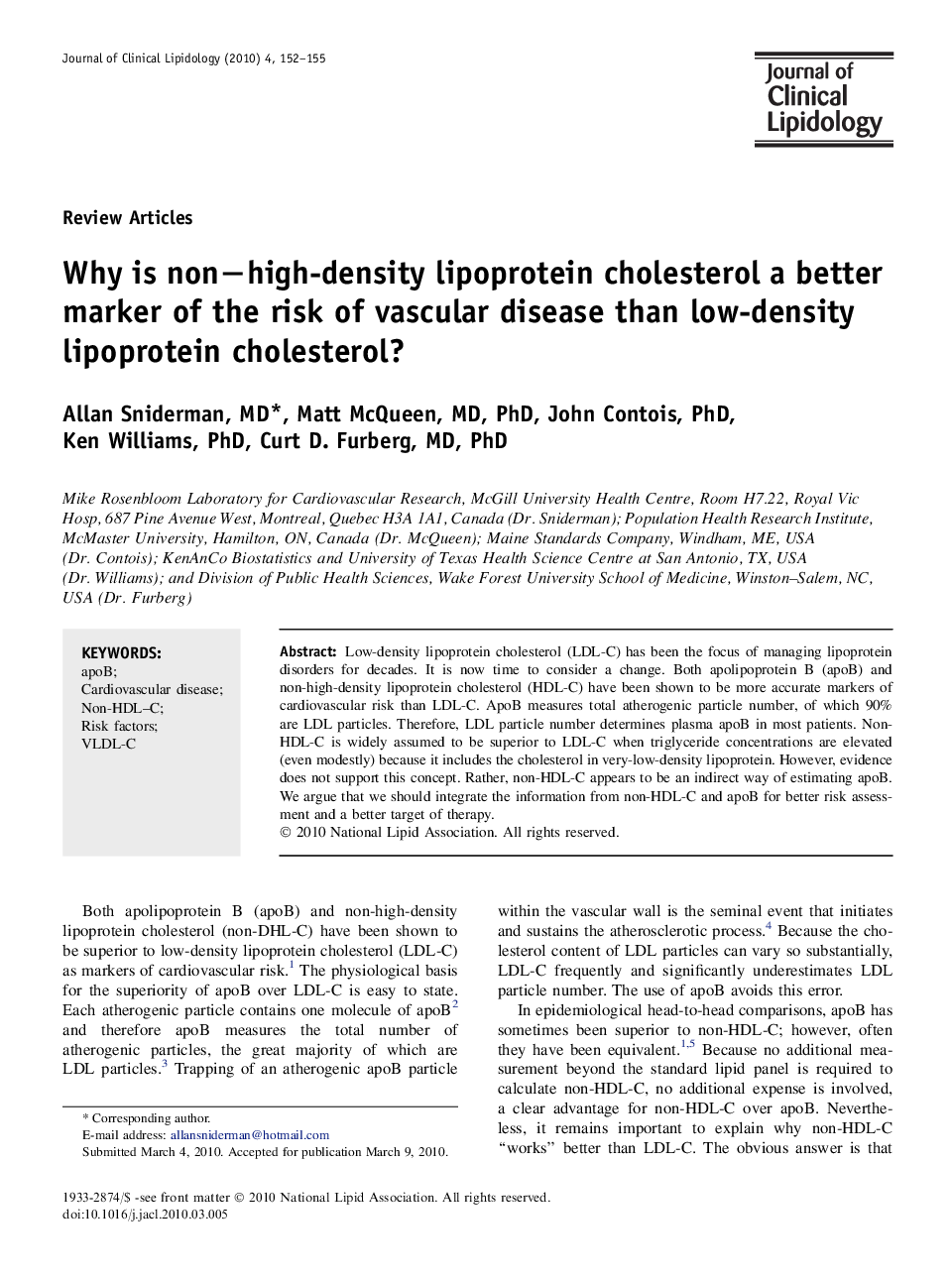| Article ID | Journal | Published Year | Pages | File Type |
|---|---|---|---|---|
| 2966397 | Journal of Clinical Lipidology | 2010 | 4 Pages |
Low-density lipoprotein cholesterol (LDL-C) has been the focus of managing lipoprotein disorders for decades. It is now time to consider a change. Both apolipoprotein B (apoB) and non-high-density lipoprotein cholesterol (HDL-C) have been shown to be more accurate markers of cardiovascular risk than LDL-C. ApoB measures total atherogenic particle number, of which 90% are LDL particles. Therefore, LDL particle number determines plasma apoB in most patients. Non-HDL-C is widely assumed to be superior to LDL-C when triglyceride concentrations are elevated (even modestly) because it includes the cholesterol in very-low-density lipoprotein. However, evidence does not support this concept. Rather, non-HDL-C appears to be an indirect way of estimating apoB. We argue that we should integrate the information from non-HDL-C and apoB for better risk assessment and a better target of therapy.
